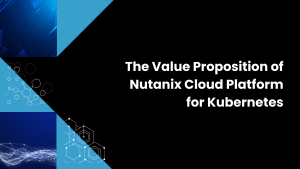
In the technology industry, it’s become standard practice to say that today has the fastest pace of change that we have ever seen – only to be surpassed tomorrow. The cool new thing can fall out of favor, or be replaced by a new shiny object in the blink of an eye. Of course the reality in IT is that few technologies really die, and everything is additive. Of all of the shows that I’ve attended this year, I was surprised that the one that I received the most inquiries before and after about was the OpenStack Summit Vancouver 2018. “Isn’t that dead…why are you still going…did I miss out?” In my opinion, the initial expectations for OpenStack were not realistic. The open source project started by NASA and Rackspace was said to “kill VMware” and/or AWS by creating “all the OpenStack clouds”. This was my fifth year at the OpenStack Summit North America, and while attendance was down from previous years, as my co-host on theCUBE John Troyer said, it wasn’t people chasing buzz, but those that had real jobs and saw utility in the show and technologies.
The cliplist at the bottom of this article is an 16 minute video made up of executives, thought leaders, and practitioners explaining the role of OpenStack in 2018.

The reality is that plenty of clouds (primarily outside of North America) are built using OpenStack. Three years ago after the OpenStack Summit which was also in Vancouver, I wrote that OpenStack has the opportunity to the the “Integration Engine for Modern Infrastructure”. The update that I would make is that open source is a toolbox, and out of the OpenStack components (which now include items outside beyond the OpenStack stack including Kata Containers and CI/CD tool Zuul), many industries including financial, retail, and even software startups, are using these tools to build solutions. The ecosystem has shifted greatly in the last few years. The “OpenStack distribution” market never materialized and while all of the major storage and server manufacturers support the solutions, it is just another workload that sits on top, not a significant driver of their business. Instead, the largest players in the space are Intel and all of the Linux players (Red Hat, Canonical, SUSE). While Rackspace and Mirantis pushed for years to try to become “the Red Hat of OpenStack”, it shouldn’t be surprising that Red Hat became the Red Hat of OpenStack. In thriving open source communities including both OpenStack and Kubernetes, most customers either build their own stack, or leverage Red Hat’s platforms. Canonical’s Founder Mark Shuttleworth said: “OpenStack very much now is about solving a real business problem, which is the automation of the data center and the cost parity of private data centers with public cloud.”
More analysis of OpenStack Summit and ecosystem in video or podcast (theCUBE Insights on iTunes)
The highlight for the last couple of years has been the success of NFV solutions by telecommunications companies, and this has progressed into the exciting realm of edge computing. Networking players (Cisco, Nuage, Juniper, Cumulus) have a strong presence in the ecosystem. As Cumulus Networks co-founder JR Rivers says, “VMware hasn’t shriveled up like a raisin, and Openstack serves a very different purpose in the world than something like VMware does. But Openstack is incredibly relevant. We got, about 20% of our customers are building Openstack clouds for either public cloud offerings to other people or for private cloud usage themselves. It’s great technology, it’s moved along quite a ways. I think it’s still got a bit to go, but it’s got legs for sure.”
Coming into this year’s event, many of us thought that the OpenStack Foundation would rename the event to the “Open Infrastructure Summit” since the event’s scope is more than OpenStack (see the photo at the top of this article that this could have been under discussion when they printed information). This sort of semantics is more important to industry watchers and investors than users. Users care about business value and solutions that work. OpenStack is not the hot new topic, regardless, like Linux before it, these tools are gaining adoption, remain relevant in a number of emerging areas, and are expanding the reach of open infrastructure around the globe.


